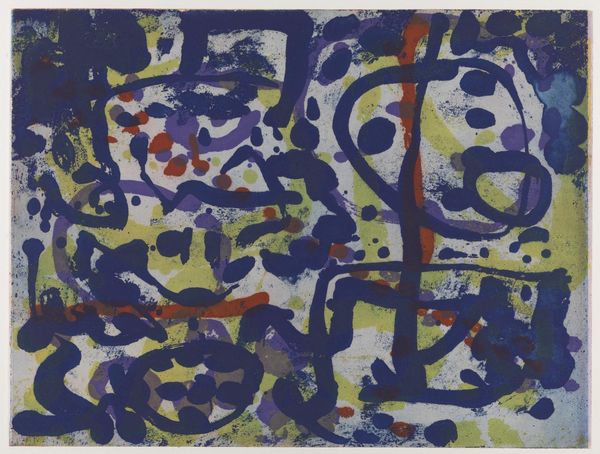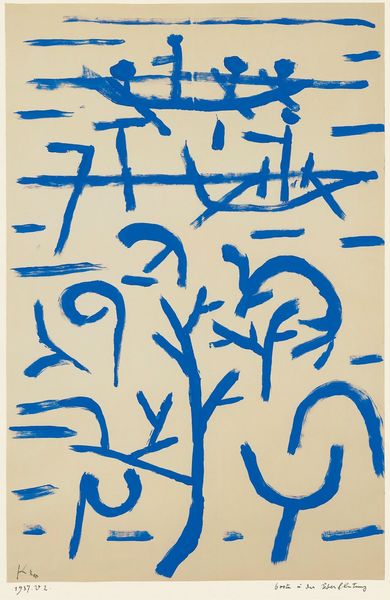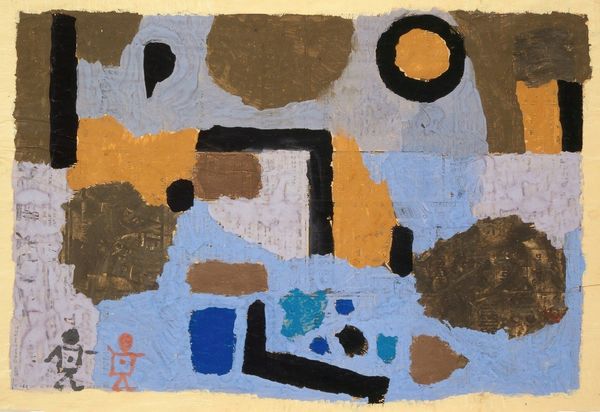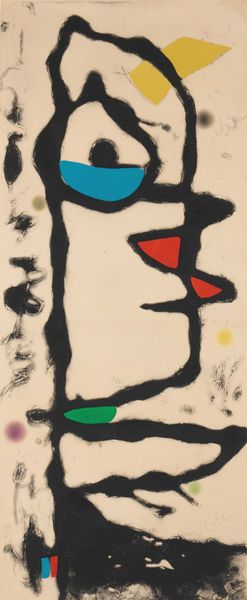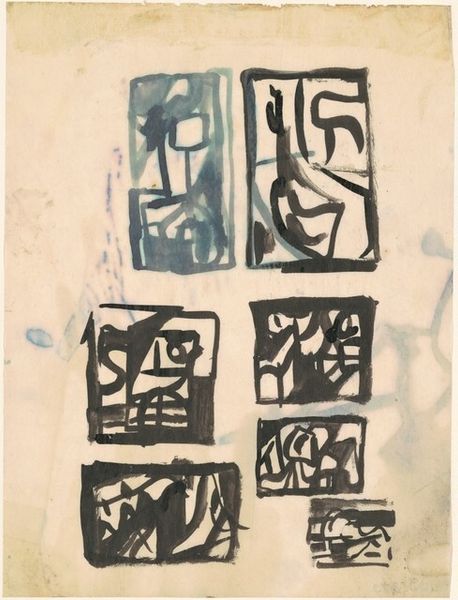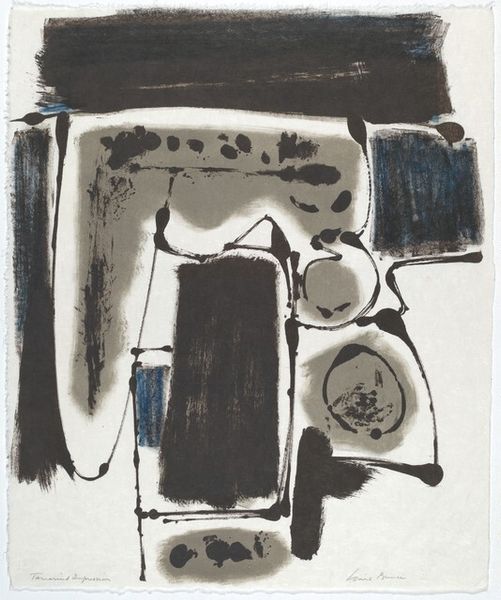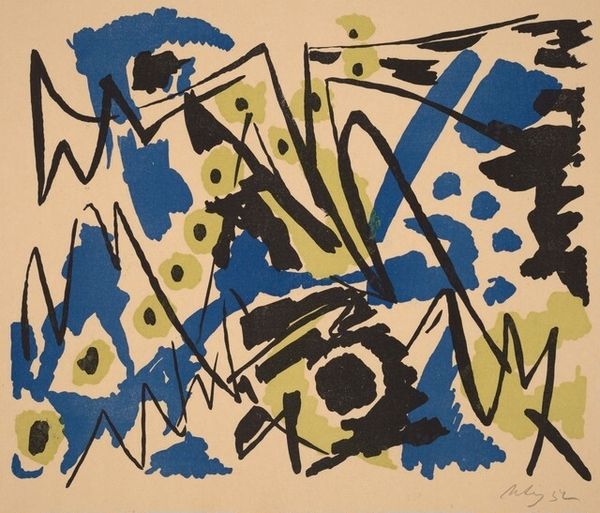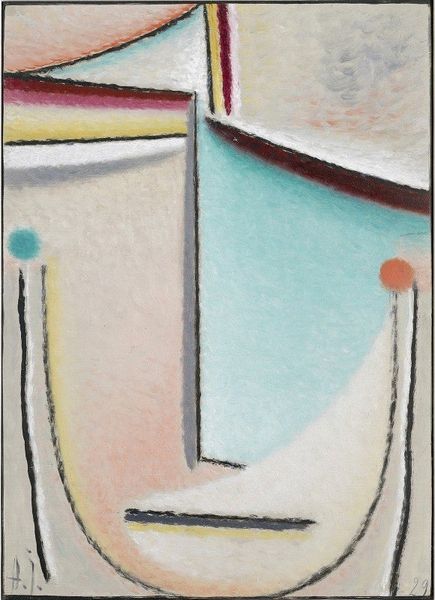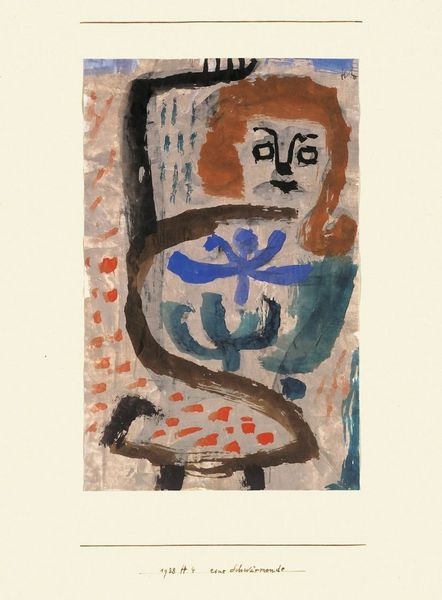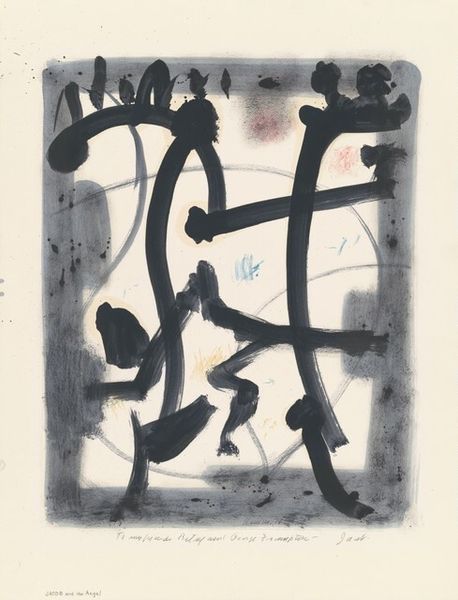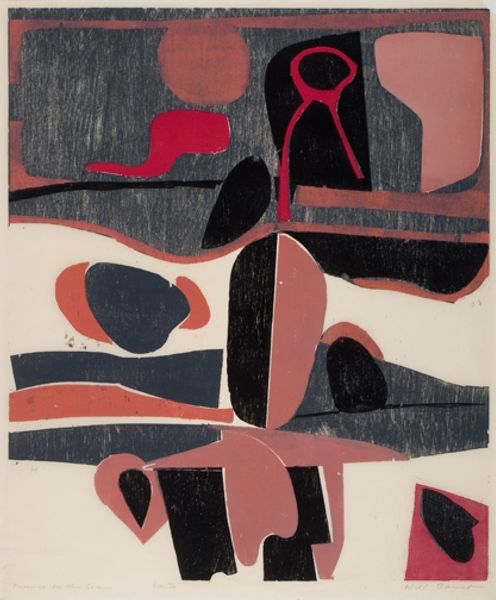
Dimensions: 47.0 x 33.0 cm
Copyright: Public Domain
Editor: Here we have Paul Klee’s Untitled piece from around 1938, a mixed-media painting employing tempera. I'm immediately struck by the interplay of the severe black lines against those pastel hues of pink and blue, creating such a playful balance of opposites. How do you interpret this work? Curator: Considering Klee's exploration of form, line, and color, observe how he deconstructs pictorial space into almost glyph-like configurations. The interplay isn’t just about balance but a visual dialectic between rigidity and fluidity. Notice the negative space created, actively shaping our perception, inviting us to ponder spatial relationships, creating an active viewing experience. How do those circular motifs complicate this reading, in your opinion? Editor: Well, they certainly soften the rigid lines. They appear almost like floating planets or musical notes within the composition. They draw my eye around the canvas, creating movement and rhythm within the defined blocks of colour. Is there a relationship between his colour palette and this suggestion of rhythm? Curator: Precisely. Klee uses a restricted palette to emphasize chromatic relationships. Note that subtle tonal gradations generate internal contrasts within larger areas, contributing to the overall rhythm. The geometric forms combined with the seemingly random strokes form visual puzzles, open to numerous interpretations, avoiding definite meaning but inviting speculation on the nature of symbols themselves. What conclusions can we then draw from Klee’s arrangement of these visual elements? Editor: It seems that Klee presents not a singular narrative, but rather, the sheer potential for many. That abstraction can open a world of possible meaning through shapes, line and form alone. Curator: Precisely! An invitation for each of us to construct our personal understanding through the raw visual data.
Comments
stadelmuseum about 2 years ago
⋮
"A hovering, silent, magical apparition in the crowd" is how Klee was described by a friend during the last years of the artist's life. He had been dismissed from his post as professor in Düsseldorf in 1933 after being denounced as a "cultural Bolshevik". He left Germany and returned to Bern, where, marked by illness, he created his mysterious late works. Klee confronts the viewer with black lines on reduced patches of colour as if they were secret graphic characters from a vanished culture. There is nothing to help us interpret them - no picture title to make it easier to decipher what we see.
Join the conversation
Join millions of artists and users on Artera today and experience the ultimate creative platform.
